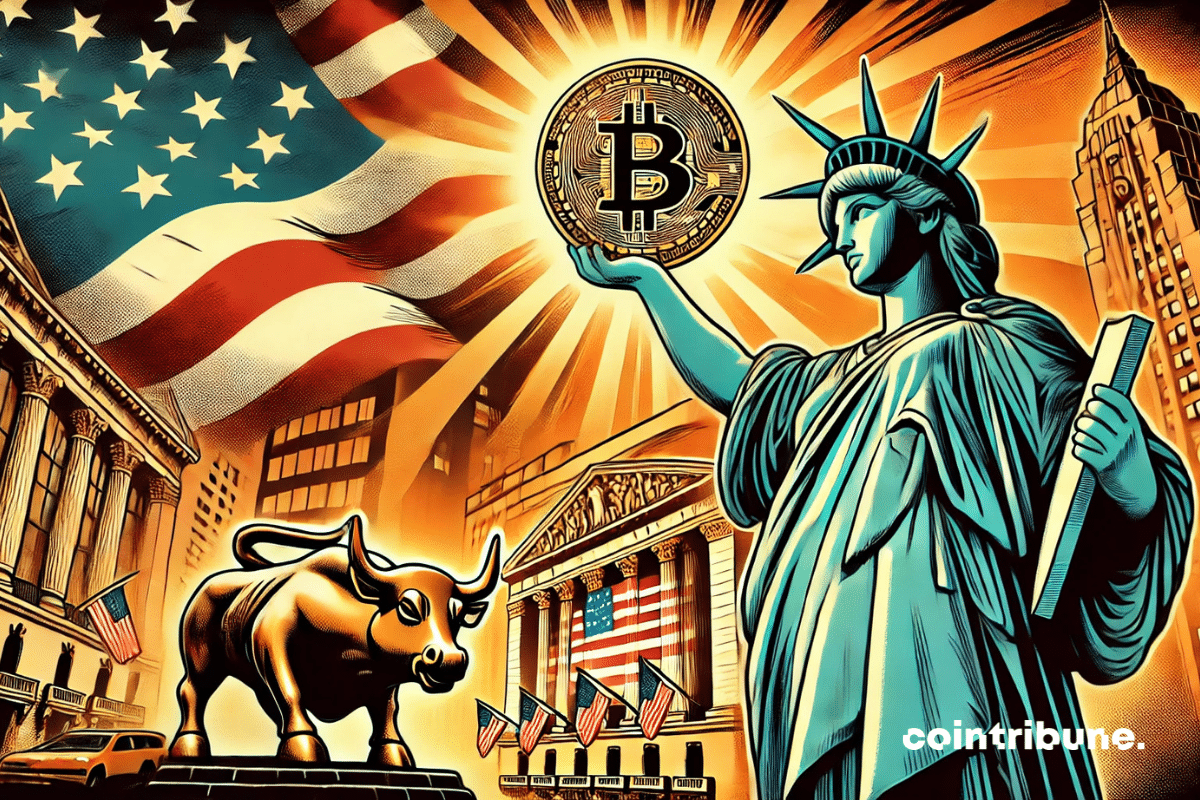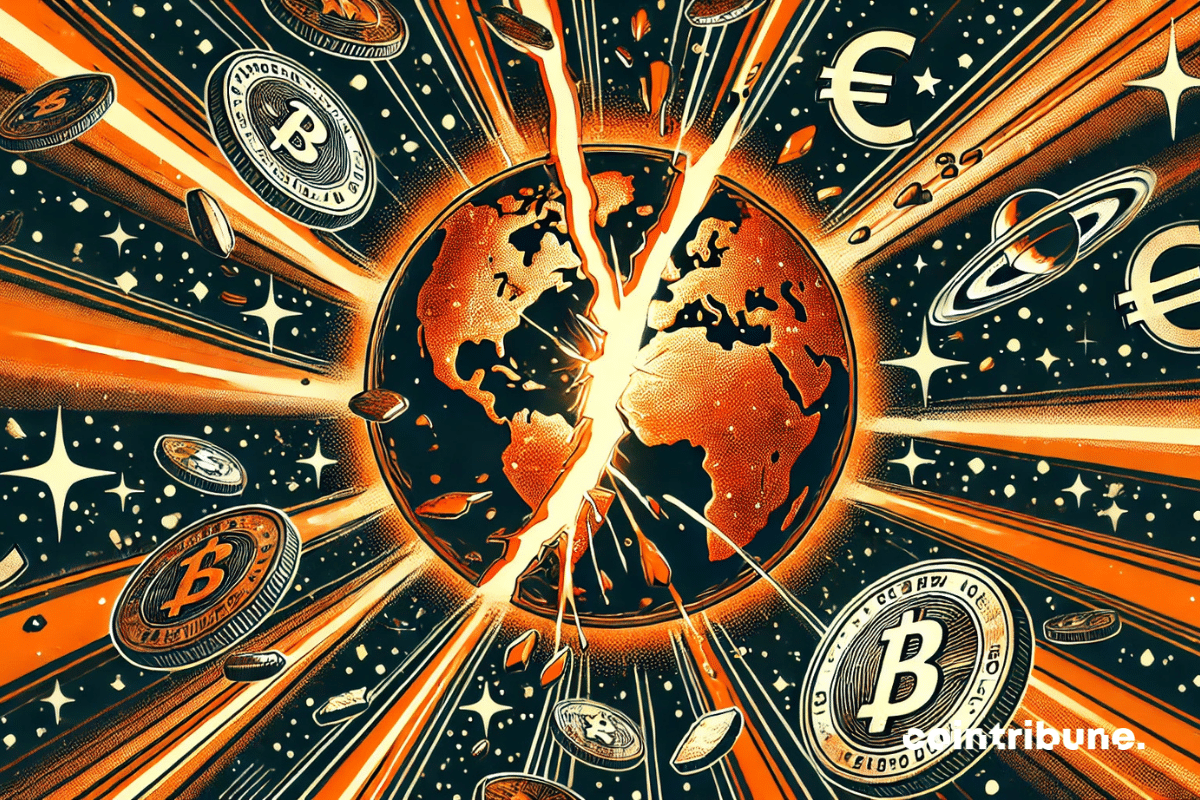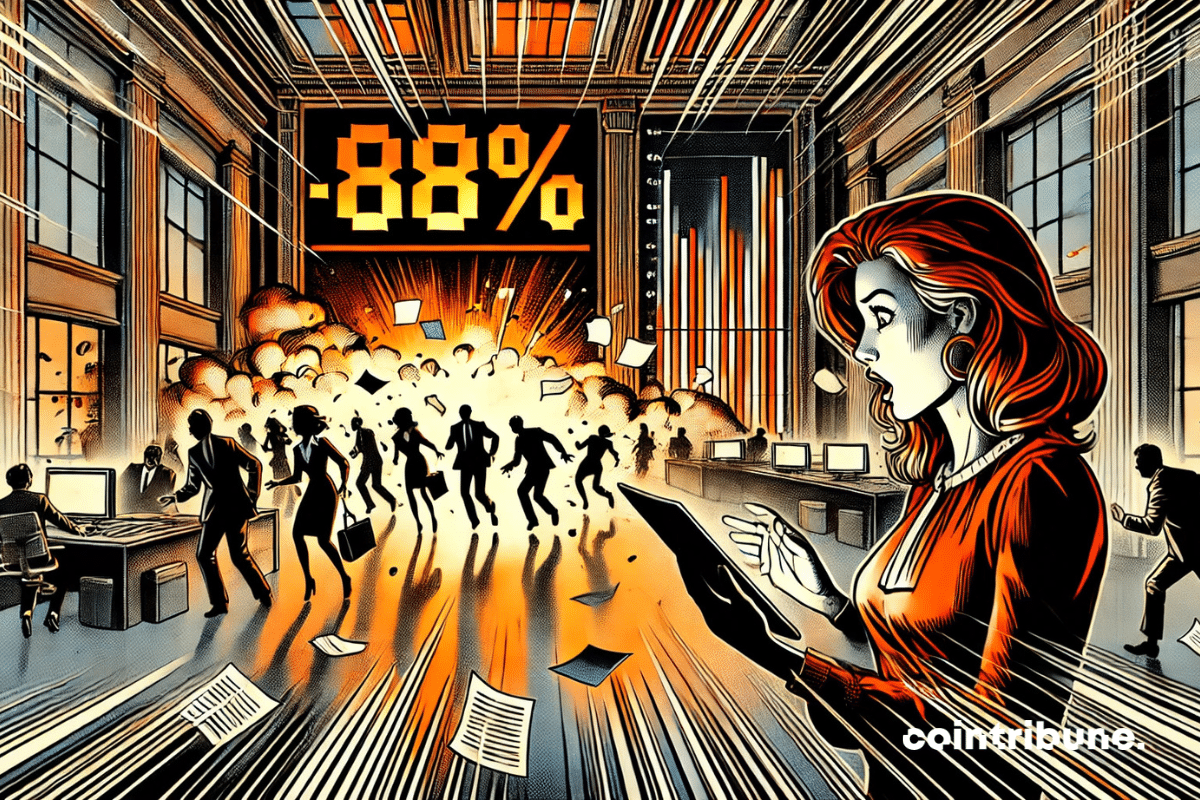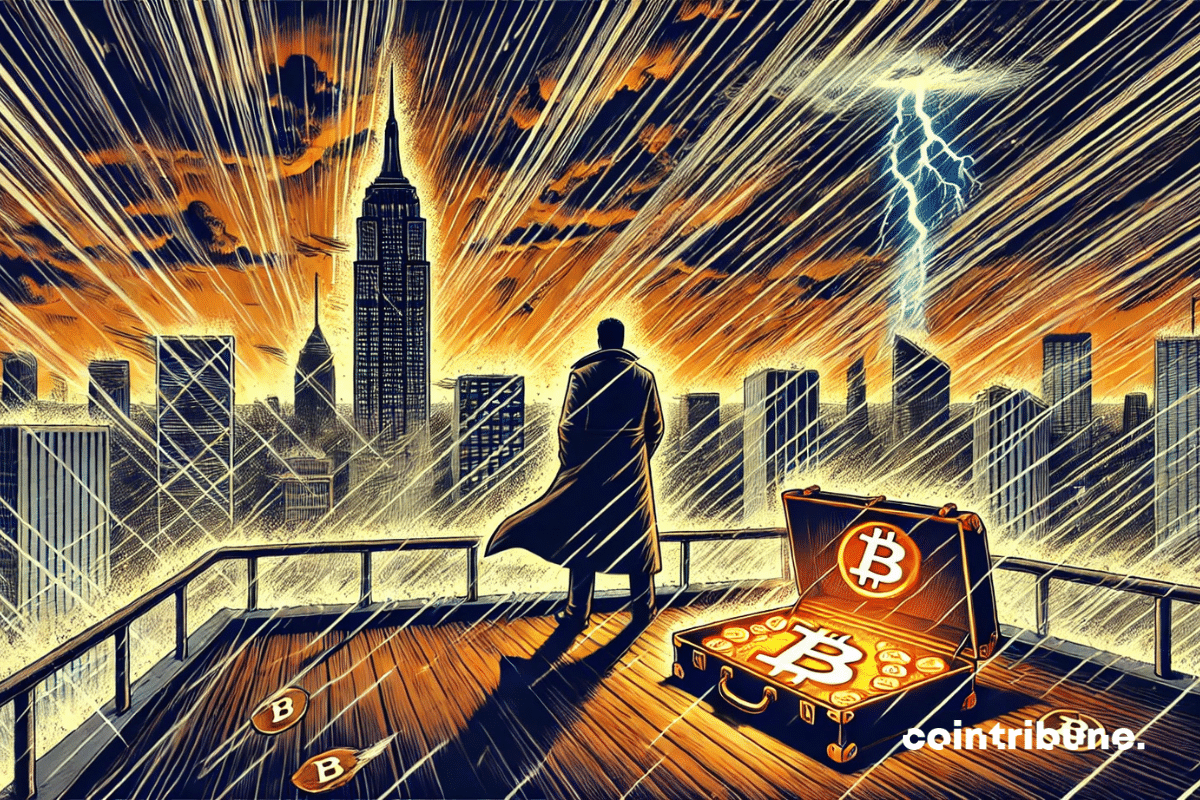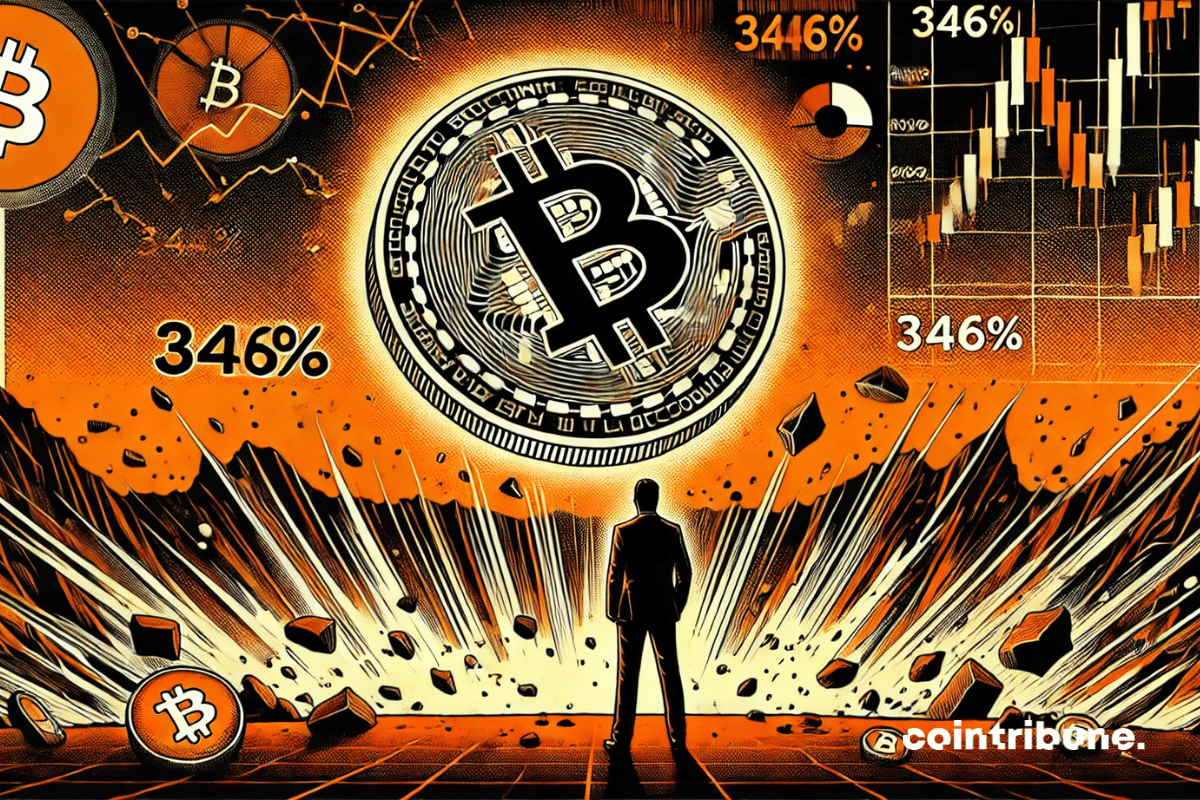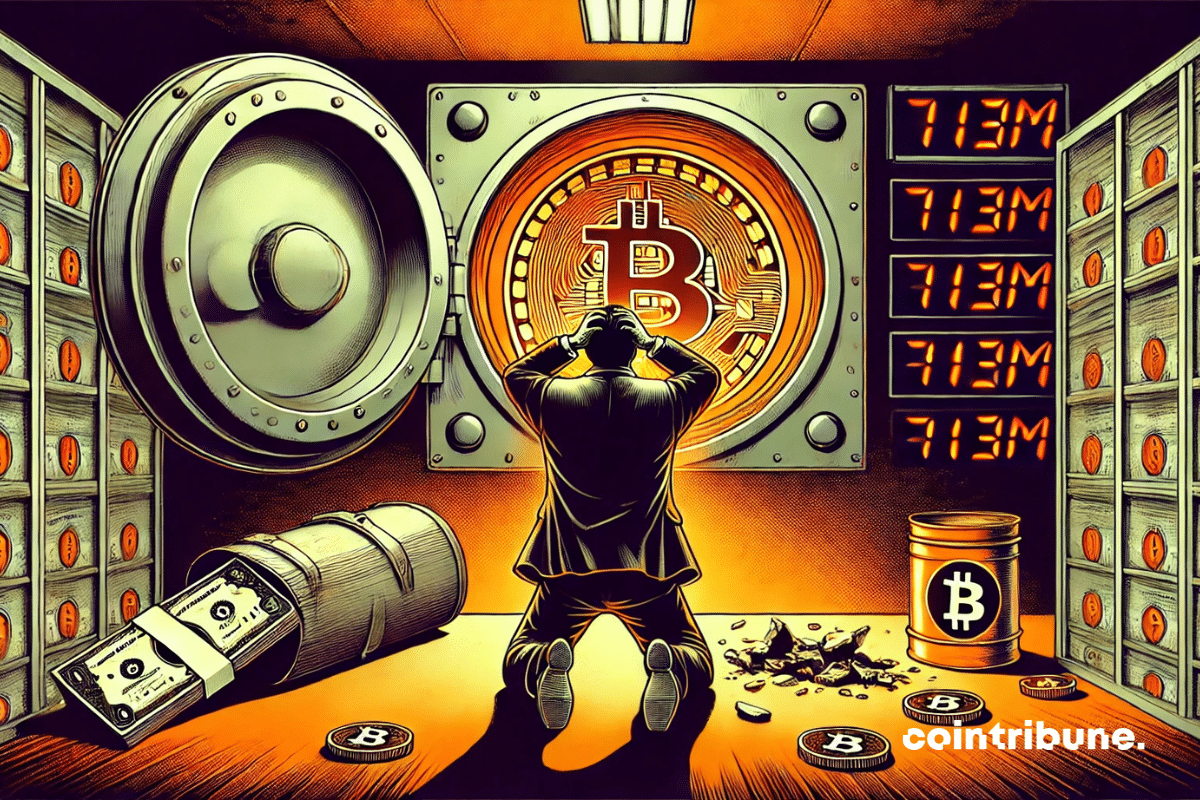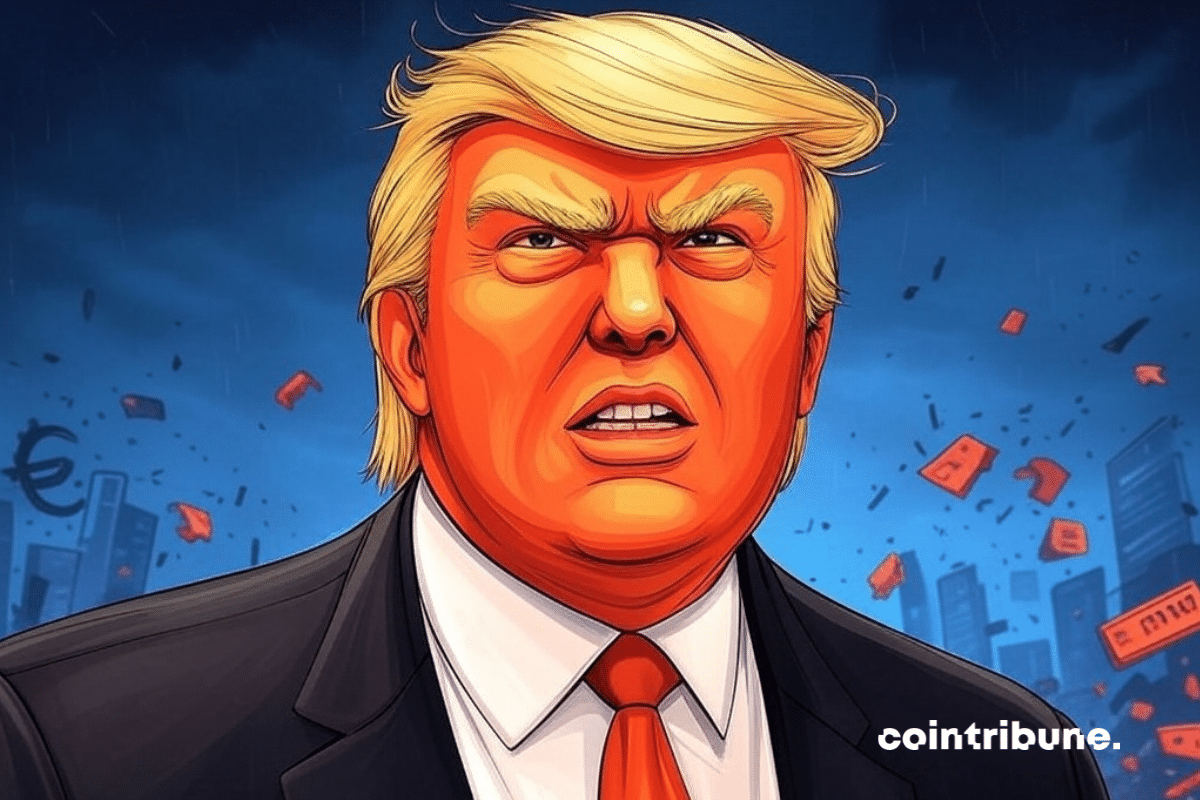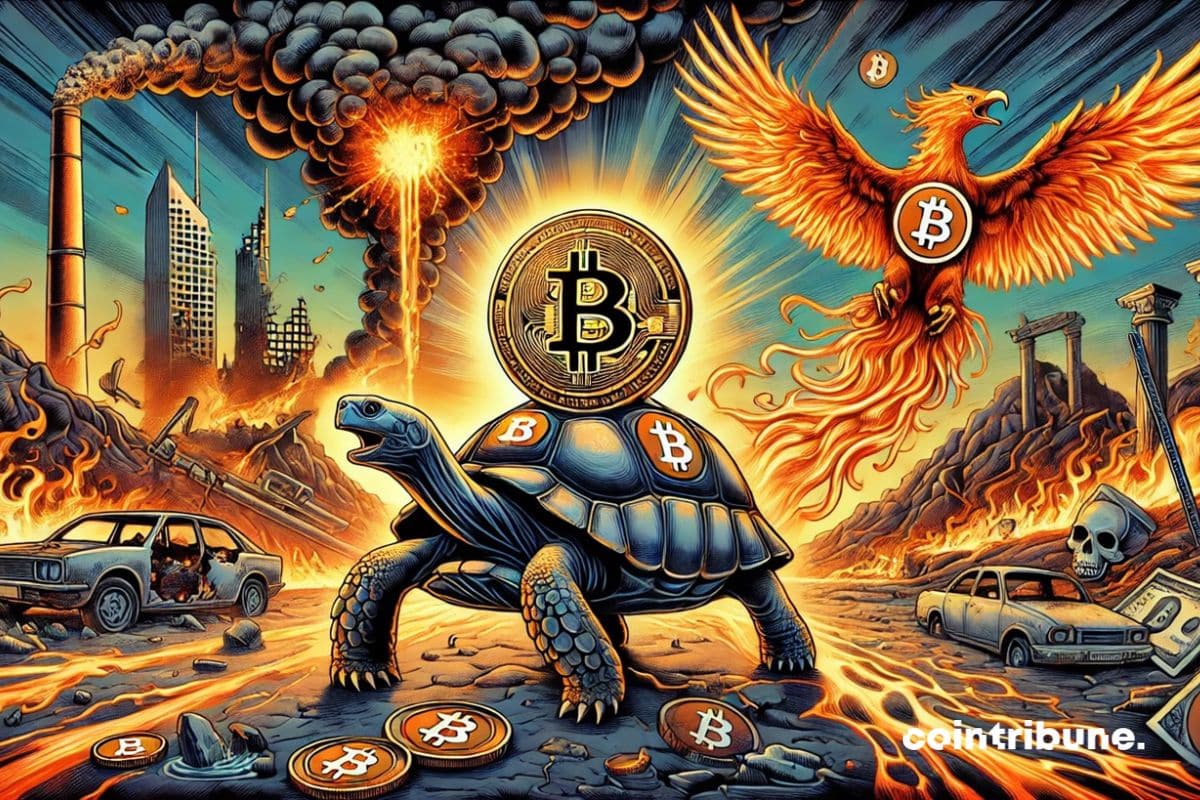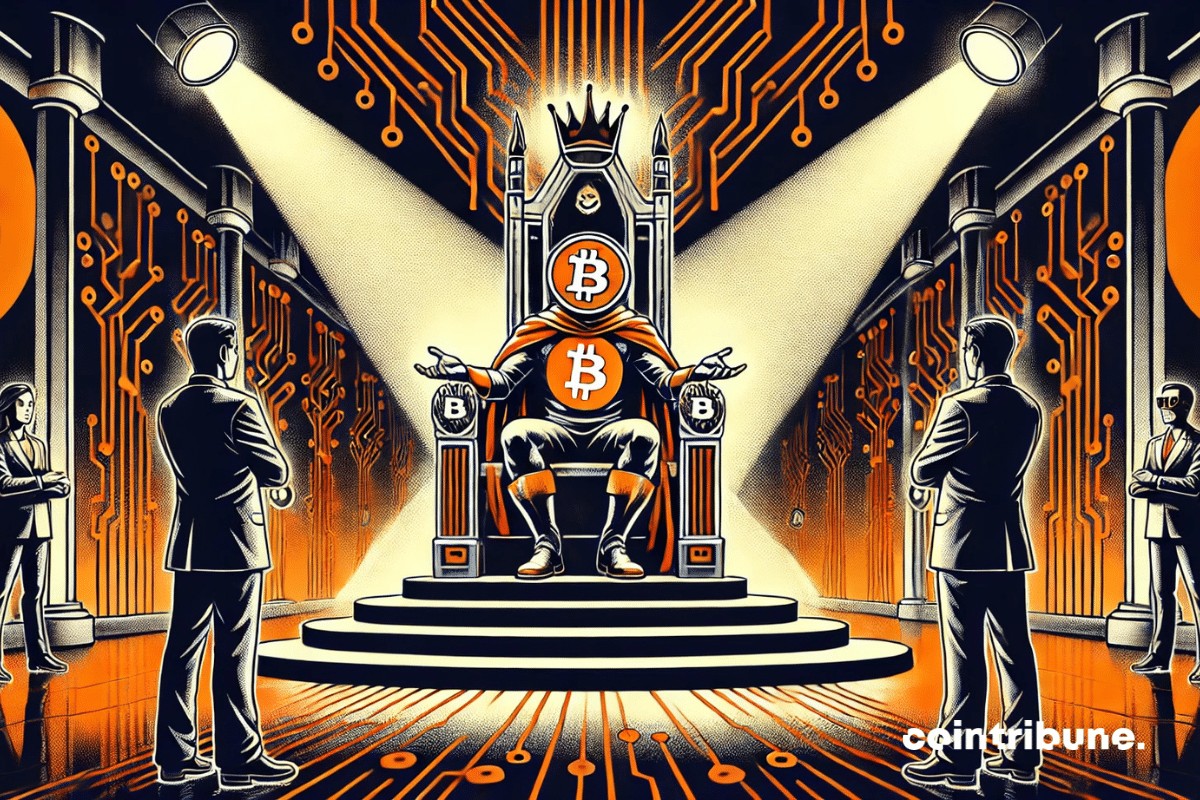How many bitcoins will the United States buy and how? White House advisor Bo Hines advocates using customs tax revenues.
Theme Bitcoin (BTC)
According to a US government official, Bitcoin could become an alternative to gold for the coming decades. Details here!
Bitcoin, often compared to a digital gold rush, is taking a decisive step. Imagine: 79 companies now hold nearly 700,000 BTC, equivalent to a treasure estimated at 57 billion dollars. These figures reflect not just an accumulation of assets, but a profound shift in investment strategies. Far from fleeting speculation, Bitcoin is establishing itself as a key piece in the reserves of economic giants. A silent but explosive revolution.
Bitcoin (BTC) recently made headlines by reaching $85,800 on April 14, 2025, before stabilizing at $84,600! Temporarily breaking a downward trend. This rebound comes after an unexpected announcement by U.S. President Donald Trump regarding a partial easing of import tariffs. But are Bitcoin bulls really back, or is this just a temporary surge? Let's analyze the key factors.
Billionaire Ray Dalio warns that the international order is about to change at the expense of U.S. monetary hegemony. Bitcoin is lurking.
Crypto ETFs are in free fall: $795 million withdrawn last week. Discover more details in this article!
Despite global economic turbulence and the volatility of the crypto market, the CEO of Strategy continues his massive acquisitions of bitcoin with a new purchase of 285 million dollars.
On April 13, Bitcoin surpassed $86,000 before plunging below $84,000, without any macroeconomic alerts or exogenous factors. This abrupt reversal can be explained by an unprecedented imbalance in liquidations: $52 million in long positions against only $15 million in short positions, representing a gap of 346%. This anomaly reveals a structural tension related to leverage, where excessive speculative optimism makes markets particularly sensitive to internal corrections.
As the crypto markets catch their breath after a period of high volatility, all eyes are on three giants: Bitcoin, Ethereum, and Ripple. This week is set to be decisive, with critical technical levels and macroeconomic factors that could redefine market dynamics. Between hopes for breakthroughs and risks of correction, here’s what could shake up portfolios.
The increasing trade tensions between the United States and China have significantly impacted American spot Bitcoin ETFs. These financial products recorded a net outflow of $713 million last week, marking their seventh consecutive day of withdrawals.
As markets shake and capital flees risk assets, Michael Saylor stands firm. The founder of Strategy, indifferent to macroeconomic upheavals, has just added more than 22,000 bitcoins to his treasury. Indeed, the timing raises questions: BTC's correction is intensifying, and geopolitical uncertainty is settling in. However, Saylor does not waver. For him, bitcoin is not a gamble; it is a conviction. A sharp position, contrary to the consensus, which reignites the debate on the resilience of the maximalist strategy.
The recent imposition of massive tariffs by Donald Trump, followed by an unexpected pause on certain Chinese products, has thrown financial markets into turmoil. While some see this as a deliberate strategy to reorganize the global economic landscape, others interpret this turnaround as a capitulation to market pressures and Chinese intransigence.
While economists count illusions, Bitcoiners sense the truth. False data, weakening dollar: a new monetary dogma is being born before our eyes, far from official reports.
After a brutal correction of 30% that caused bitcoin to fall below $75,000, the leading cryptocurrency is once again showing signs of strength by stabilizing around $84,500. This significant rebound has been amplified by President Trump's announcement of a temporary suspension of tariffs for most countries.
While the markets sneeze, the old Bitcoin veterans are back in charge. Accumulation, resistance, and conviction: a discreet but possibly explosive cocktail in this unstable monetary theater.
On April 12, Donald Trump surprised the markets by lifting a series of tariffs on strategic technology products. This move, amidst the rivalry with China, instantly propelled bitcoin beyond $85,000. Far from a simple trade adjustment, this decision reshapes industrial balances and sends a strong message: American economic policy is now aligned with the interests of digital players and the crypto sector.
American bitcoin miners are facing a new blow. The Trump administration has imposed heavy tariffs on mining equipment from Asia. As a result, costs are skyrocketing and the worst is yet to come...
48,575 BTC moved in a single day: a rare, massive maneuver with heavy implications. On April 9, as trade tensions between Washington and Beijing rekindle uncertainty, nearly $3.6 billion in bitcoin was transferred to accumulation wallets, a record volume since 2022. Behind this movement, strong signals emerge: major investors seem to be betting once again on a market pullback to strengthen their position. This sequence could mark a strategic turning point.
As Bitcoin hovers around $82,000, a burning question on investors' lips is: has the king of cryptos finally found its floor? John Bollinger, a legend of technical analysis and creator of the eponymous Bands, brings a glimmer of hope. According to him, technical signals suggest a rebound scenario. But caution: behind this enticing prospect lie traps to decipher.
"We do not defend nature. We are nature defending itself." This indigenous proverb illustrates the capacity of the natural world to survive crises without seeking absolute optimization. It reminds us that resilience is at the heart of living beings. Nature does not aim for speed or immediate efficiency, but for diversity and adaptation. Certain animal species, in particular, traverse the ages by evolving in response to threats. Similarly, Bitcoin does not rely on instant performance, but on its resilience due to its decentralized architecture. It follows the same laws of nature, being able to withstand multiple attacks and bans. The parallel drawn in this article between nature and Bitcoin raises an essential question about the model to adopt. Should we prioritize efficiency or resilience, in order to ensure the sustainability of a world in constant digital evolution?
As Donald Trump revived his trade war with China, causing sudden volatility in the markets, bitcoin whales seized the opportunity. On April 9, 2025, so-called "accumulation" addresses received 48,575 BTC, worth $3.6 billion — the largest daily influx since February 2022.
The bullish dynamics of the crypto market are faltering. While the total market capitalization remains stable around $2.52 trillion, the declines seen in Bitcoin, Ethereum, and other heavyweights in the sector (XRP and Dogecoin) are feeding doubts. Faced with unbroken technical resistances, several traders fear entering a bearish cycle. The market, already fragile, could tip over if no rebound signal appears quickly.
The Pakistani government is seriously considering the possibility of using its electricity surplus for Bitcoin mining and hosting AI centers. This strategy aims to convert an energy surplus into a national economic lever.
Bitcoin shows a considerable lead of 85% over Ethereum in terms of realized capitalization, a sign of increased investor confidence in the world's leading cryptocurrency.
The crypto landscape, long compared to a digital Wild West, seems to finally be seeing the emergence of a semblance of regulatory mapping. The SEC, the historic guardian of American financial markets, has just sketched out a roadmap to clarify the application of securities laws to cryptos. Far from being a flash in the pan, this initiative aims to serve as a compass for industry players, oscillating between innovation and compliance. A deep dive into the intricacies of an evolving regulation.
The financial landscape is in turmoil. While Bitcoin, often criticized for its legendary volatility, goes through a phase of relative stability, the S&P 500 is surging like a speculative asset. Ironically, Wall Street's flagship index, a symbol of traditional finance, is now rivaling the unpredictability of memecoins. A role reversal that questions certainties and redraws the boundaries between risk and security.
A 638% imbalance between long and short liquidations on Bitcoin is shaking market benchmarks. According to CoinGlass, this unusual figure illustrates the fragility of leveraged positions and the excess optimism of investors. Behind this anomaly, the entire speculative mechanism of the market is faltering, revealing deep tensions in the current dynamics. Far from being a mere incident, this episode forces a reevaluation of the certainties and strategies that dominate the crypto ecosystem.
It is now the turn of the rating agency Standard & Poor's to endorse Bitcoin as a store of value.
Ethereum ETFs, still lagging behind Bitcoin, are awaiting the blessing of staking to rise. The SEC could seal their fate by the end of 2025, but uncertainty remains.
Venerated yet unused, Dorsey's Bitcoin refuses to take a golden retirement. He wants to see it circulate, not stagnate. And for that, Signal must become its cash register.

